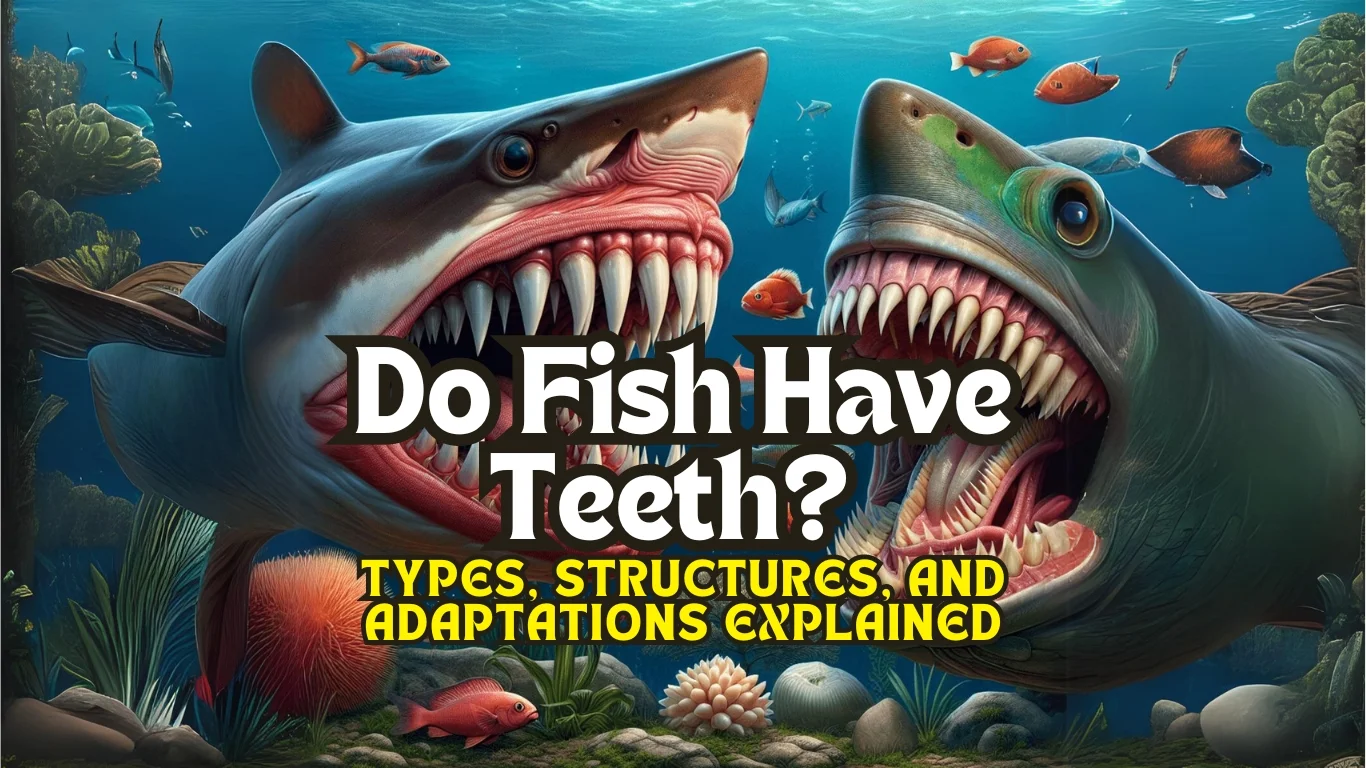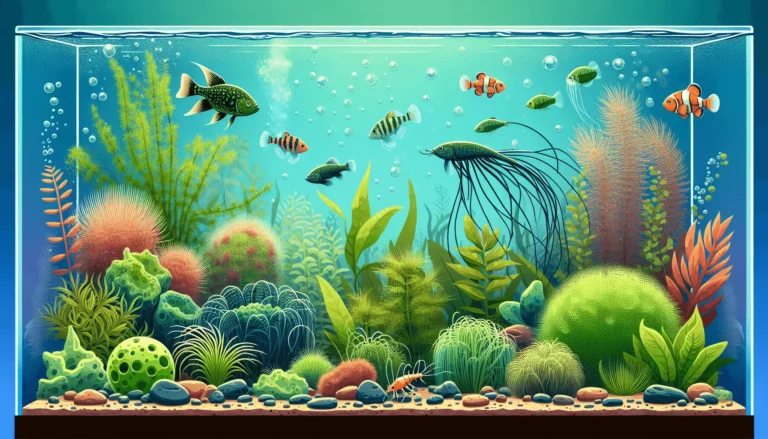Fish teeth are essential for their survival, helping them eat effectively and protect themselves from predators. The range and intricacy of fish teeth can be surprising, from sharp, pointed ones in meat-eating fish to flat, grinding ones in plant-eaters. Knowing if fish have teeth helps us understand the adaptations that let different species succeed in their environments.
In this article, we’ll:
- Answer the question: Do Fish Have Teeth?
- Look at the unique dental structures of various fish species
By exploring the wide variety of fish teeth, you’ll learn how these amazing animals have developed special dental features suited to their diets and habitats.
Types of Fish Teeth
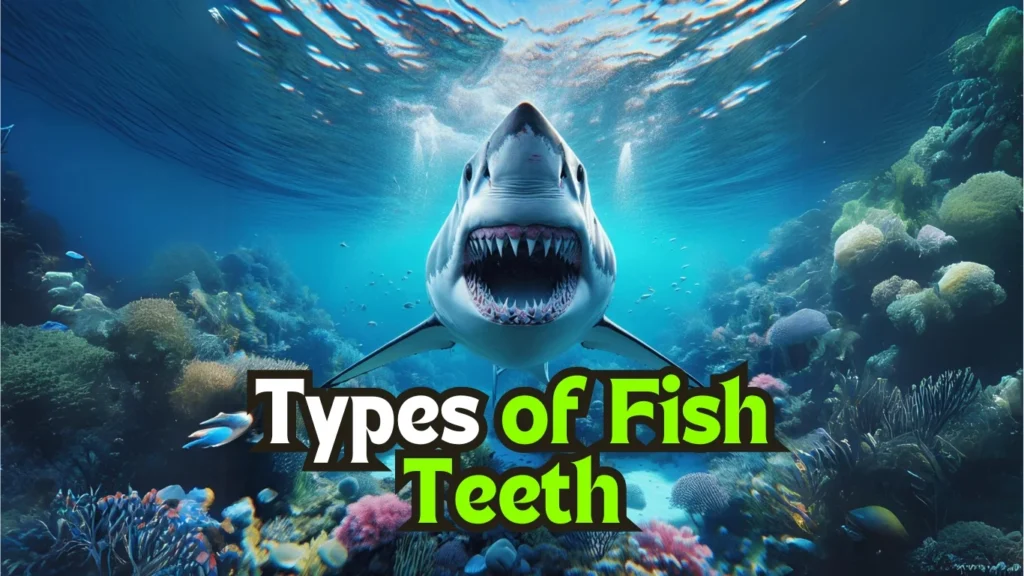
Carnivorous Fish Teeth
Carnivorous fish have sharp, pointed teeth specifically designed for catching and eating other animals. These teeth are often needle-like, helping them grip slippery prey. Some also have serrated or blade-like edges to make tearing flesh easier.
Characteristics:
- Sharp and Pointed: Ideal for puncturing and holding onto prey.
- Serrated Edges: Found in some species like sharks, these help in cutting through meat.
- Multiple Rows: Some carnivorous fish, such as sharks, have multiple rows of teeth that replace themselves continuously.
Examples of Carnivorous Species:
- Sharks: Perhaps the most iconic example, sharks have a range of tooth shapes depending on their diet. Great White Sharks, for instance, have serrated, triangular teeth perfect for slicing through large prey.
- Goliath Tigerfish: Known for its ferocious appearance, this species has dagger-like teeth that can reach up to an inch in length. These teeth are perfectly adapted for gripping and tearing apart fish in fast-moving rivers.
- Piranhas: Although smaller than sharks or tigerfishes, piranhas have razor-sharp teeth arranged in a single row. These teeth interlock like a zipper, making them highly efficient at cutting through meat quickly. Interestingly, piranhas have a unique ability to replace their sharp teeth continuously throughout their lives.
- Barracudas: With long, needle-like teeth, barracudas can easily capture and consume smaller fish. Their streamlined bodies allow them to strike with lightning speed.
These examples show the variety of tooth structures among carnivorous fish, each perfectly suited to their hunting habits. The sharpness and arrangement of these teeth allow them to effectively catch and eat their prey.
Herbivorous Fish Teeth
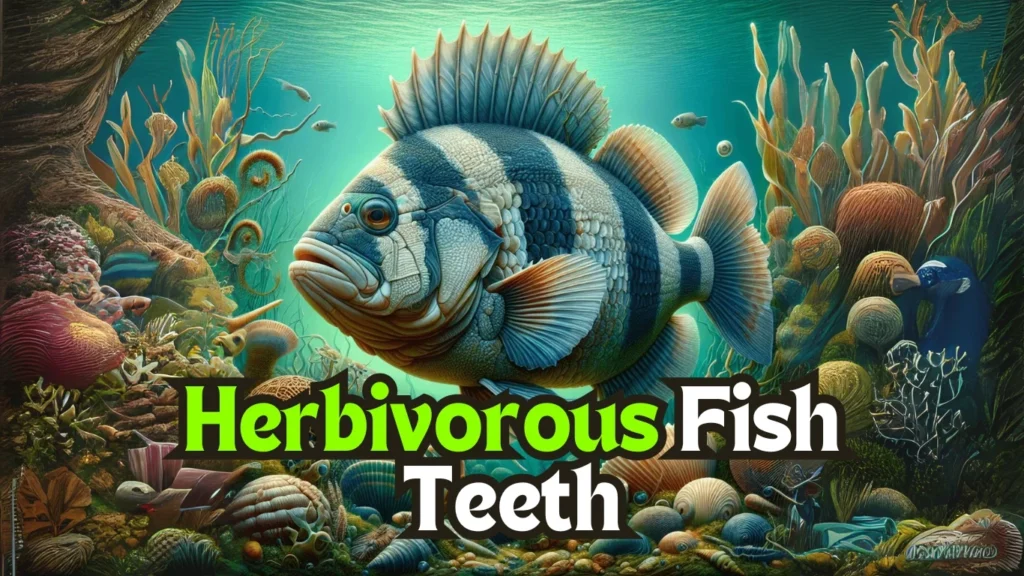
Herbivorous fish have a different set of dental adaptations suited for their plant-based diets. Their teeth are typically flatter and broader, enabling them to grind down tough plant material effectively.
Characteristics:
- Flat and Broad: Ideal for grinding and crushing plant material.
- Molar-Like Structure: Similar to human molars, providing a large surface area for processing food.
- Durability: Must withstand the wear and tear of grinding tough vegetation.
Some notable examples include:
- Sheepshead Fish: This species has human-like molar teeth that allow it to crush hard-shelled prey like barnacles and crabs as well as plant material. Learn more about Sheepshead Fish here.
Teeth of Herbivorous Fish
Herbivorous fish have a special set of teeth adapted to their plant-based diets. These fish usually have flat and broad-shaped teeth designed for grinding plants and algae. This type of dental structure is particularly effective for breaking down fibrous plant material, enabling the fish to extract necessary nutrients.
The Truth About Fish and Drowning | Can Fish Drown?
How to Choose the Best Sputnik Fishing Weight for Surf Fishing
Fly Fishing with a Spinning Reel: Pro Tips for Anglers
Can You Fly Fish in the Rain? Essential Tips and Tricks
Examples of Herbivorous Fish with Unique Teeth:
- Sheepshead: Known for its strikingly human-like molars, sheepshead fish use these flat grinding surfaces to crush shells and grind plant matter.
- Pacu: This species features square-shaped teeth similar to human molars, ideal for its omnivorous diet that includes both plants and smaller animals.
Herbivorous fish teeth provide an excellent contrast to the sharp, pointed teeth of carnivores, highlighting the diverse adaptations in fish dentition based on dietary needs.
Location of Teeth in Fish Anatomy
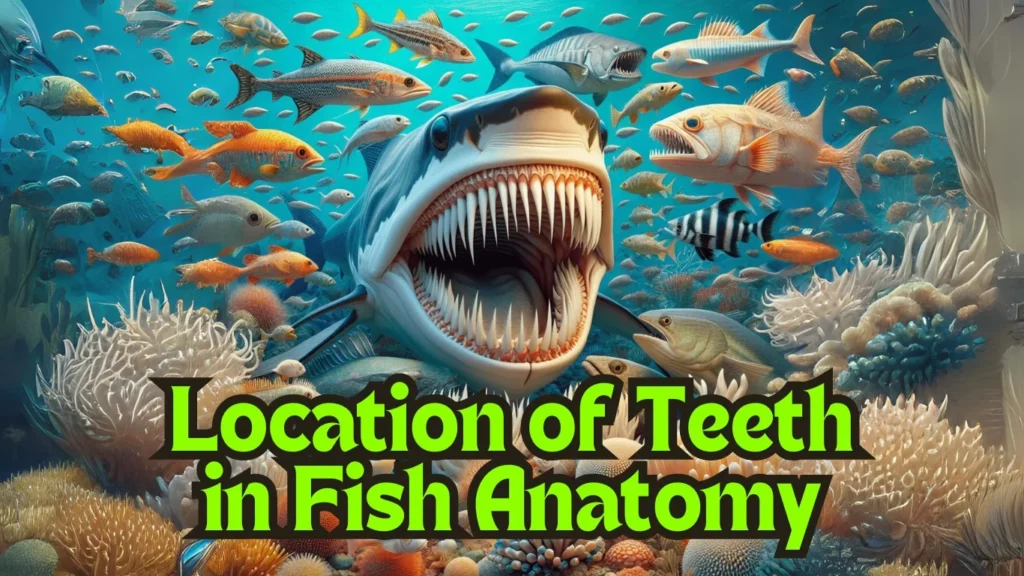
Fish have a fascinating variety of dental locations, reflecting their diverse feeding habits and evolutionary adaptations. While many fish have teeth in the usual spots—like the upper and lower jaws—others have them in more unexpected places.
Common Locations:
- Upper and Lower Jaws: These are the most familiar to us and help fish catch and chew food.
- Lips: Some species have small, sharp teeth along their lips, which are handy for scraping algae or warding off predators.
- Pharyngeal Teeth: Found in the throat, these teeth are essential for fish like goldfish and tilapia. They grind up food before it goes into the stomach.
- Tongue: Certain fish, such as some catfish species, have teeth on their tongues to help grip slippery prey.
Importance of Tooth Location:
Where a fish’s teeth are located directly affects how they eat:
- Surface Feeders: Fish with teeth in their jaws or lips can quickly grab prey or nibble on plants.
- Bottom Feeders: Species with pharyngeal teeth can crush hard-shelled creatures like clams or crabs.
- Predatory Fish: Sharp teeth in the jaws or tongue help hold onto wriggling prey.
Understanding the anatomy of a fish mouth gives us clues about how they survive and what they like to eat.
Unique Adaptations in Fish Dentition
Unique dental structures in fishes highlight the incredible diversity and specialization within aquatic life. Certain species have evolved remarkable adaptations to enhance their feeding efficiency and survival.
- Dragonfish: Known for its predatory skills in deep waters, the dragonfish has fang-like teeth. These long, needle-sharp teeth are perfect for capturing prey in the dark, pressurized depths of the ocean.
- Sheepshead: With molar-like teeth that look like human teeth, sheepshead fish use these powerful teeth to crush shellfish and other hard-shelled prey.
- Pacu Fish: With square-shaped teeth, pacu fish can efficiently grind plant material. This adaptation suits their omnivorous diet, allowing them to consume both plants and small animals.
These specialized dental adaptations highlight the complex relationship between a fish’s diet and its dental structure, showcasing nature’s creativity in providing species with tools necessary for their ecological roles.
Best Hook Size for Surf Fishing: Find Your Perfect Match
Tooth Development and Regeneration in Fishes
Tooth development in fishes is a remarkable process, reflecting their adaptability in diverse aquatic environments. Fish begin developing teeth at different stages, often influenced by their diet and habitat. Many species exhibit a continuous tooth replacement system, essential for maintaining their feeding efficiency.
Initial Development
- Fish teeth generally start forming during the larval stage.
- The development process involves the formation of tooth buds from epithelial cells.
Dental Regeneration
- Unlike mammals, fish can lose and regrow teeth throughout their lives.
- This continuous regeneration ensures they always have functional dentition.
- Sharks are prime examples, known to replace their teeth every few weeks.
Mechanism of Regrowth
- New teeth develop from dental laminae, tissues responsible for producing tooth buds.
- As old teeth fall out or wear down, new ones move into place seamlessly.
The ability to regenerate teeth allows fish to adapt to various feeding challenges and maintain their role in the aquatic food web. This fascinating adaptation showcases the complexity and efficiency of fish dentition. Recent studies have also explored the potential for tooth regeneration in other vertebrates, providing insights that could revolutionize our understanding of dental biology across species.
Notable Examples of Fish Teeth
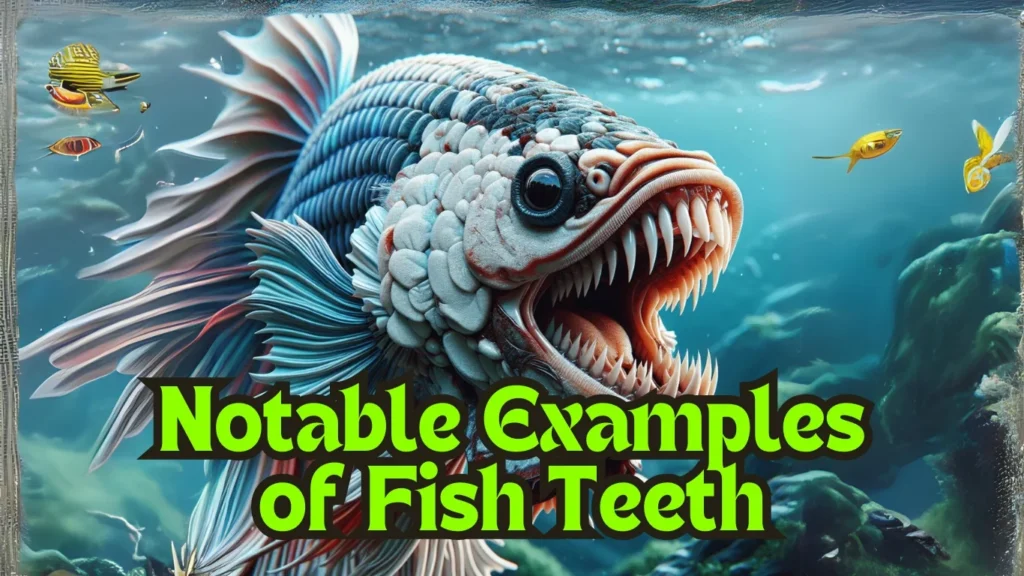
Understanding the variety in fish teeth brings us to specific fascinating examples:
- Betta (Siamese Fighting Fish): These small but aggressive species have sharp front teeth, enabling them to grab and tear food effectively. The question, do betta fish have teeth, is often answered with a yes, highlighting their skill in feeding.
- Koi Carp: Known for their flat grinding surfaces, Koi Carp teeth are adapted for processing plant material. This unique structure supports their plant-based diet efficiently.
- Flowerhorn: This breed showcases variations in dental structures depending on the specific type of Flowerhorn. Their teeth reflect their diverse dietary needs and breed-specific traits, which can be further explored in resources such as this compendium on ornamental fishes.
- Silver Dollar: These fish have teeth designed for a plant-based diet. Their teeth are suited to nibbling on plants, making them proficient at consuming vegetation.
Betta fish teeth are small yet formidable, contrasting with the broad, flat teeth of koi carp. Flowerhorns offer a glimpse into breed-specific dental diversity, while the silver dollar exemplifies herbivorous adaptations. Each example underscores the incredible variation in fish dentition across species. For more insights on fish and their characteristics, you might find this resource on life fish useful.
Fun Facts About Fish Teeth
Discover interesting facts about fishes’ teeth that might surprise you:
- Cookiecutter Shark: This small shark species has circular, serrated teeth which it uses to gouge round plugs of flesh from its prey, resembling the cuts made by a cookie cutter.
- Parrotfish: Known for their beak-like teeth that are fused together, parrotfish use their unique teeth to scrape algae off coral reefs.
- Piranhas: These infamous fish have razor-sharp teeth and a powerful jaw, capable of biting through steel fishing hooks.
These unusual dental structures highlight the incredible diversity in fish teeth.
Conclusion
Understanding the different types of teeth in fish gives us a fascinating look into how they adapt and survive. From the sharp, pointed teeth of meat-eating fish like sharks to the flat, grinding teeth of plant-eating ones like the pacu, fish teeth vary greatly based on what they eat.
Looking at where teeth are located in different parts of a fish’s body—whether it’s in their jaws, lips, tongue, or even throat—shows just how specialized these creatures are. Many fish have the amazing ability to grow back lost teeth throughout their lives, making sure they can always hunt or find food in their habitats.
Key Points:
- Fish Teeth: Different kinds and locations of teeth suited for specific diets.
- Special Features: Unique structures like fang-like teeth in dragonfish.
- Tooth Regrowth: Constant tooth replacement similar to sharks.
Do Fish Have Teeth? Absolutely. Their various dental adaptations are crucial for their survival and offer endless opportunities for further exploration into aquatic life and its fascinating complexities.
FAQs (Frequently Asked Questions)
Do fish have teeth?
Yes, many species of fish do have teeth. Fish dentition varies significantly among species, with adaptations that suit their dietary needs, whether they are carnivorous or herbivorous.
What types of teeth do carnivorous fish have?
Carnivorous fish typically possess sharp and pointed teeth designed for grasping and tearing prey. Examples include sharks and Goliath Tigerfish, which have specialized dental structures that aid in their predatory lifestyles.
How do herbivorous fish’s teeth differ from those of carnivorous fish?
Herbivorous fish usually have flat and broad-shaped teeth adapted for grinding plant material. Species like sheepshead and pacu showcase these grinding teeth, allowing them to efficiently process their plant-based diets.
Where are fish teeth located within their anatomy?
Fish teeth can be located in various parts of the mouth, including the jaws and pharynx. The location of the teeth is crucial for their feeding habits and helps determine how they capture and consume food.
Can fish regenerate their teeth?
Yes, many fish species have the ability to lose and regrow their teeth throughout their lives. This dental regeneration is an important adaptation that allows them to maintain effective feeding capabilities despite wear or loss.
What are some notable examples of fish with unique dental structures?
Notable examples include Betta (Siamese Fighting Fish) with sharp incisors, Koi Carp with flat grinding surfaces suited for plant material, Flowerhorns with breed-specific variations in dental structure, and Silver Dollars adapted for a herbivorous diet.

